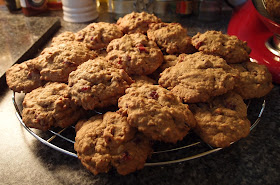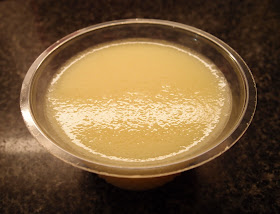
I really crave comforting, old fashioned baking at the moment – if you can imagine it on the kitchen table of a farmer’s wife in an Enid Blyton book then I want a slice of it!
Sandwiching this cake is a classic buttercream given a bit of punch by adding some cinnamon. I thought about using a different filling but it’s wrong to mess around with a cake like this – sometimes classic is the way to go.
So many people don’t like sultanas (or raisins, or currants) and I never understand why; they have such a flavoursome fruity sweetness and I love their squidgy texture when baked. They are one of my dessert island ingredients – give me sultanas and I’m happy! We all have favourite ingredients that will tempt us to bake/buy/order a cake – so come on, share... what’s yours?
This cake sums up the power of simple pleasures to me – it’s heavenly to eat; the crumbly sponge populated with juicy sultanas and a faint spark of cinnamon. Add to that the whipped, smooth buttercream and I’m in cake heaven.
This isn’t a traditional sponge – it’s more of a cross between a sponge and a rock bun; therefore I recommend eating it on the day of baking as it the texture will get harder. Of course, because it’s crumbly and delicious it’s a total nightmare to try and photograph. I spent ages trying to get a nice clean slice...but I shouldn’t complain too much – it was fun eating the rejects!
Ingredients
For the sponge:
175g unsalted butter, at room temperature
175g caster sugar
2 eggs
225g self raising flour
2 teaspoons ground cinnamon
225g sultanas
milk to mix
For the buttercream:
175g unsalted butter, at room temperature
300g icing sugar
1 teaspoon ground cinnamon
Method
Preheat the oven to 180°C/fan oven 160°C/350°F/gas mark 4.
Line two 20cm round loose bottomed sandwich tins with baking paper.
Make the cake on the day you wish to serve it, otherwise it may get a bit hard (like rock buns do). Beat together the butter and sugar until the mix is pale, light and fluffy – don’t skimp on this stage as this is where the air gets into the sponge.
Gradually beat in the eggs, one at a time.
Fold in the flour and cinnamon.
Stir in the sultanas.
Stir in enough milk to make the batter a dropping consistency – I needed 2 tablespoons.
Spoon into the prepared baking tins and level the surfaces.
Bake for 30-35 minutes, or until a skewer inserted into the cake comes out clean. Mine took just over 30 minutes.
Remove from the oven and leave to cool in the tins.
When cool enough to safely handle, de-tin and leave to cool completely on a wire rack.
Now make the buttercream: place all the ingredients in a bowl and whisk until light and fluffy.
Place the first layer on the serving plate and spread the buttercream over it.
Place the second layer on top and gently press down to ensure the layers have adhered to the buttercream.
Serve in generous slices with a cup of tea.
Bask in the glory of the wonderful thing you have created.
Eat.














































